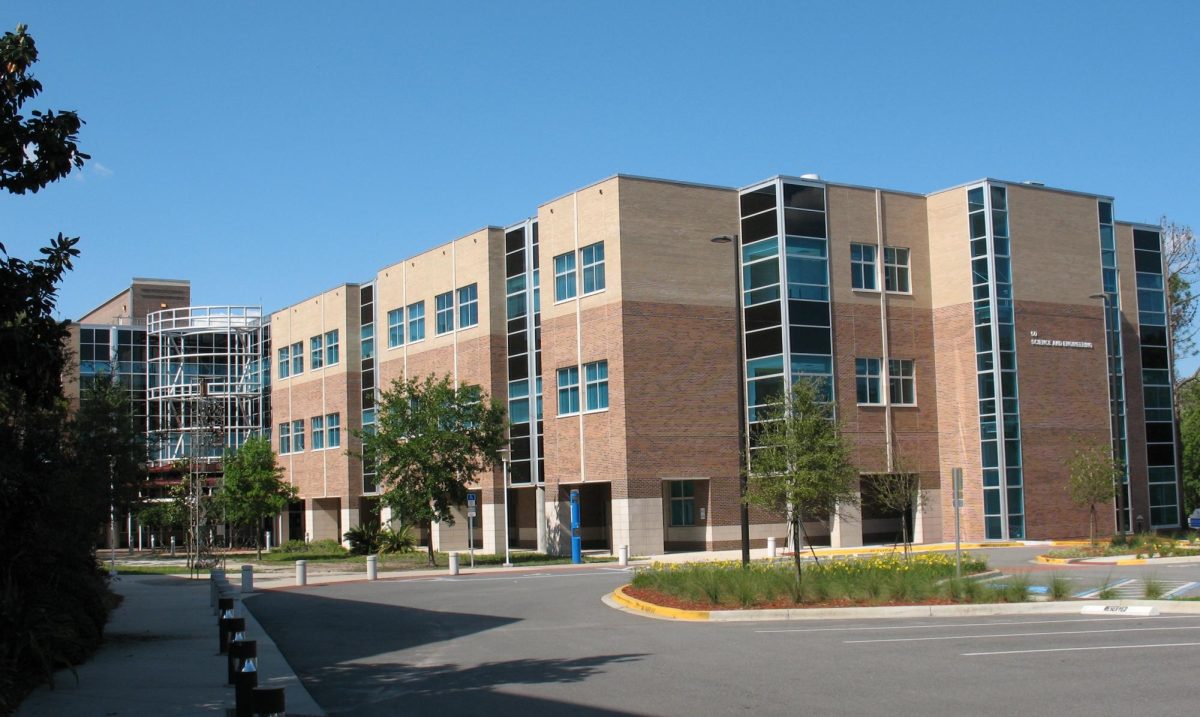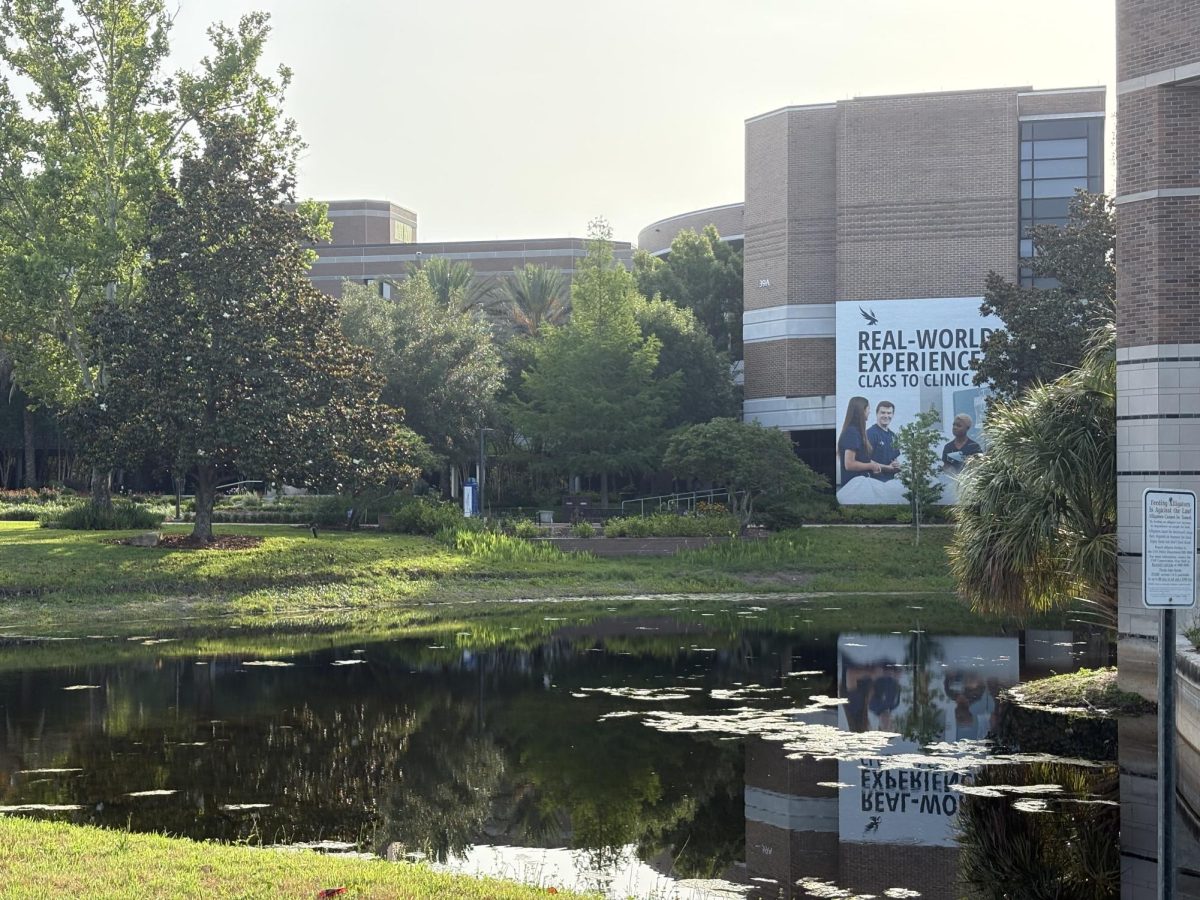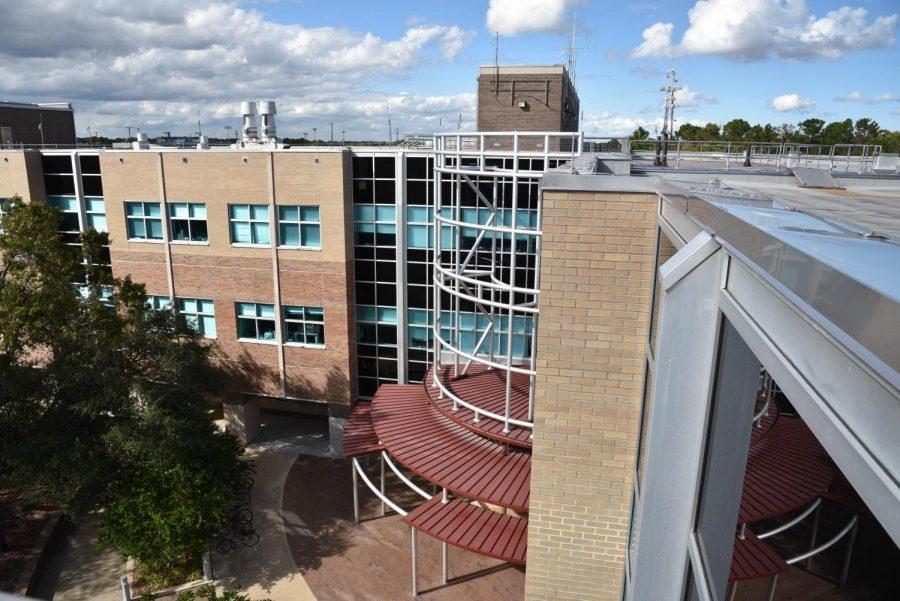
UNF Vice President of Administration and Finance Shari Shuman said the $40.5 million budgeted for the building’s construction came from PECO dollars, funding coming from the state.
UNF Project Manager Richard Elmore said the building should be finished in January 2012. Elmore’s job as project manager is to make sure the building fits UNF design standards and manages the total budget.
One of the major initiatives Elmore is overseeing is the green project.
The new buildings are certified through the U.S. Green Building Council’s Leadership in Energy and Environmental Design program. Elmore said the school is trying to achieve a silver ranking for this project.
Buildings achieve points based on specialized criteria to make schools more environmentally friendly. The school has already received points through water reduction: the installation of waterless urinals has boosted the school’s level of conservation.
The new portion of the building being constructed will be primarily for the biology department, providing new rooms and laboratories for students, faculty and staff. Students will have labs for classes in aquatics, virology, ecology, genetics, molecular biology and more.
Biology chair Courtney Hackney said this building will help students expand in the biology field. Students are going to have access to 20 teaching labs — from the former six labs.
The labs will be much larger and will easily accommodate the 24 biology sections the department oversees, Hackney said.
Three lecture halls are being built, which will seat 200, 148 and 96 students per room, Hackney said. The lecture halls have equipment that will allow instructors to demonstrate lessons to the students.
There will be about 38 offices with break rooms and a conference room on each floor.
Also, the building will have 27 research labs for faculty and students to develop their own work.
“Students who work with faculty will have opportunities to work with the latest equipment in a modern laboratory,” Hackney said.
Hackney said the labs will be specialized for different subjects.
“If you’re in an anatomy and physiology [lab], you’re in a lab designed to teach anatomy and physiology,” Hackney said. “It’s going to be a phenomenal upgrade compared to what the students have now.”
The building will be one of the best built buildings for teaching biology in Florida, he said.
Due to the prominence of the marine biology courses, the new building will accommodate this type of study by housing aquatic labs and saltwater tanks for aquatic work.
The necropsy lab will allow students to perform autopsies on stranded marine mammals to learn the animal’s cause of death.
Other features of the building will include a greenhouse on the roof, providing plant material that was not previously available to the department.
The courtyard in the center of the building will include plants and host a “green” environment.
“This is a building really designed around the student needs more than the faculty needs, for sure,” Hackney said.
A benefit the faculty members may find is the new ability to expand their own personal research. Hackney said this opportunity will allow more professors to work toward earning tenure at the university, since research is required in order to earn tenure.
Hackney said he feels the department may open up more specialized degrees in the biology field in the future. The department recently hired a marine mammalogist, allowing students to work with marine animals more so than before.
“We simply can’t grow anymore until we get in that building because there’s no more space,” Hackney said.











